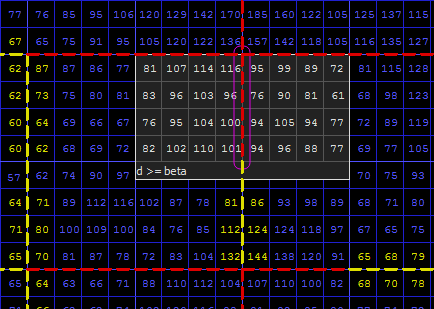Visit Intel® Video Pro Analyzer (Intel® VPA) site: software.intel.com/intel-video-pro-analyzer
Wide variety of video elementary stream and container formats supported.
Elementary streams:
- HEVC – all profiles v1 (Main, Main10) and v2 Rext, now including SHVC, SCC, and MultiView-HEVC (MV-HEVC) format extensions
- VP9 – whole spec support Profiles 0, 1, 2, 3 for 8-12 bit & 4:x:x chroma
- AVC – now including 10 bit 4:2:2
- MPEG-2
Container support:
- MP4
- MKV
- MPEG-2 in MPEG2-TS, MMT,and AVI
- H.264/AVC in AVI and MPEG4-DASH (for broadcast scenarios)
- H.265/HEVC in MMT and MPEG4-DASH
HEVC, VP9, and AVC Error Resilience improves content processing, resilience to broken and non-compliant streams, and provides enhanced error reporting.
Spec Conformance Reporting
Ensuring conformance for your output is important -- this means your content is playable on the widest range of decoders available. Errors are conveniently written to the error log for further analysis.
Fast input parsing getting even faster
- Intel VPA 2016 R4 - Get significant performance improvements of 1.7x faster for AVC, and 47x faster for MPEG-2 as compared to the previous version of VPA.
Improved Performance and responsiveness
- HEVC file indexing makes Intel VPA faster and easier to use with better performance and responsiveness when loading and executing debug optimizations and quicker switching capabilities between frames.
- Intel VPA 2017 Release - Significant improvements in decode processing time by 30% for HEVC and by 60% for AVC, along with AVC playback optimization. This includes optimizations for skipping some intermediate processing when the user clicks on frames to decode in the GUI.
Enhanced Playback and Navigation
- Intel VPA 2017 Release - New performance enhancements include decoder performance optimization with good gains for linear playback and indexing (for HEVC) to facilitate very fast navigation within the stream. Playback for HEVC improved 1.4x and for AVC improved 2.2x. See Details for baseline configuration and more.
Main View is a central part of the tool. It displays a frame in a selected from menu mode
- Coding flow to watch tiles, slices, CTU flow
- Predictions to visually observe Intra modes, Inter motion vectors and reference list, Skip status etc
- Residuals, Reconstructed pels, Deblocking process, SAO process and Final decoded pixels
- Simple motion at glance
- Informational Overlays/maps

Dual View
Compare two bitstreams highlighting details matching and different values. Enhance your product validation process with both visual and automated regression checking.
Informational Overlays/Maps are efficient tools to understand coding efficiency distribution
- Heat map, Efficiency map to identify where most bits/bins spent and detect inefficiency of encoder
- QPs, Block Types, Reference Indexes
- per block PSNR for a loaded reference YUV
Details View replaces Main View when user 'right-clicks' on a selected coding unit/block within a frame in Main View
- Goes to per pixel view for a selected block, macroblock or CTU for each Main view mode with pixel details and process inside a selected block
- Prediction – every pixel value is clickable to see how it was formed from predictors
- Residuals de-zigzag process, de-quantization and inverse transform
- Deblocking edges, strengths and impacted pels
- SAO directions and predictors
Video Quality Caliper provides more stream information, and has faster playback speed from the Intel VPA 2017 release.
Statistics and Reports
There are never too many statistics. Intel VPA provides many different kinds of data in text and chart formats to help you view, prioritize and target optimizations.
- Frame level: total pits/bytes, bypass bits, MD5/CRC
- Motion Vectors direction and Reference list utilization
- Visual charts and dump to a comma separated file for future use or further analysis
- Frame level statistics for Intra, inter modes, Prediction modes, TU, CU, PU and Partition types and many more needed for a developer
- Raw values and normalized by area or bits used
Buffer Analysis
- VBV visualization
- HRD buffer compliance
- Moving average of buffer fullness
- Frame size and frame type

Easy-to-use GUI makes optimization fun
- Quick switch in between frames
- Natural Mouse wheel use and hot keys for honed movements
- Adjustable and flexible panes
- Full screen for Main view maximizing utilization of screen area
- Amazingly seamless zoom and fast panning for quick block selection
- Options to combine Picture overlay over informational data
- YUV or one of plane view
- Thumbnails and Bars Frame
- Active and DPB references visual arrows
- Extract a frame or NAL unit
- Recently used files and folders
- Un/Docking panels design to satisfy demanding multi-monitor development practices
- Configurable working area and statistical panes in the way you like
Load an original uncompressed YUV file to inspect
- visual difference
- point any different block
- per-block objective metric - PSNR
Load a decoded uncompressed YUV file
- quick find a regression with “Find first difference”
- inspect recent development impact
- Archived YUV to save you disc space
- Offset YUV
- Encoded or decoded order
- 16 bit support
Detailed Syntax
- NAL units
- Every value of SPS, PPS, VPS, Slice
- CU, TU flags and data
- SEI messages
- Quant matrix
- Reference List
- Selected CU, block data and starting position
- Tooltips with spec reference
Color scheme support
- BT601, BT709, BT2020
Read full description in detailed documentation